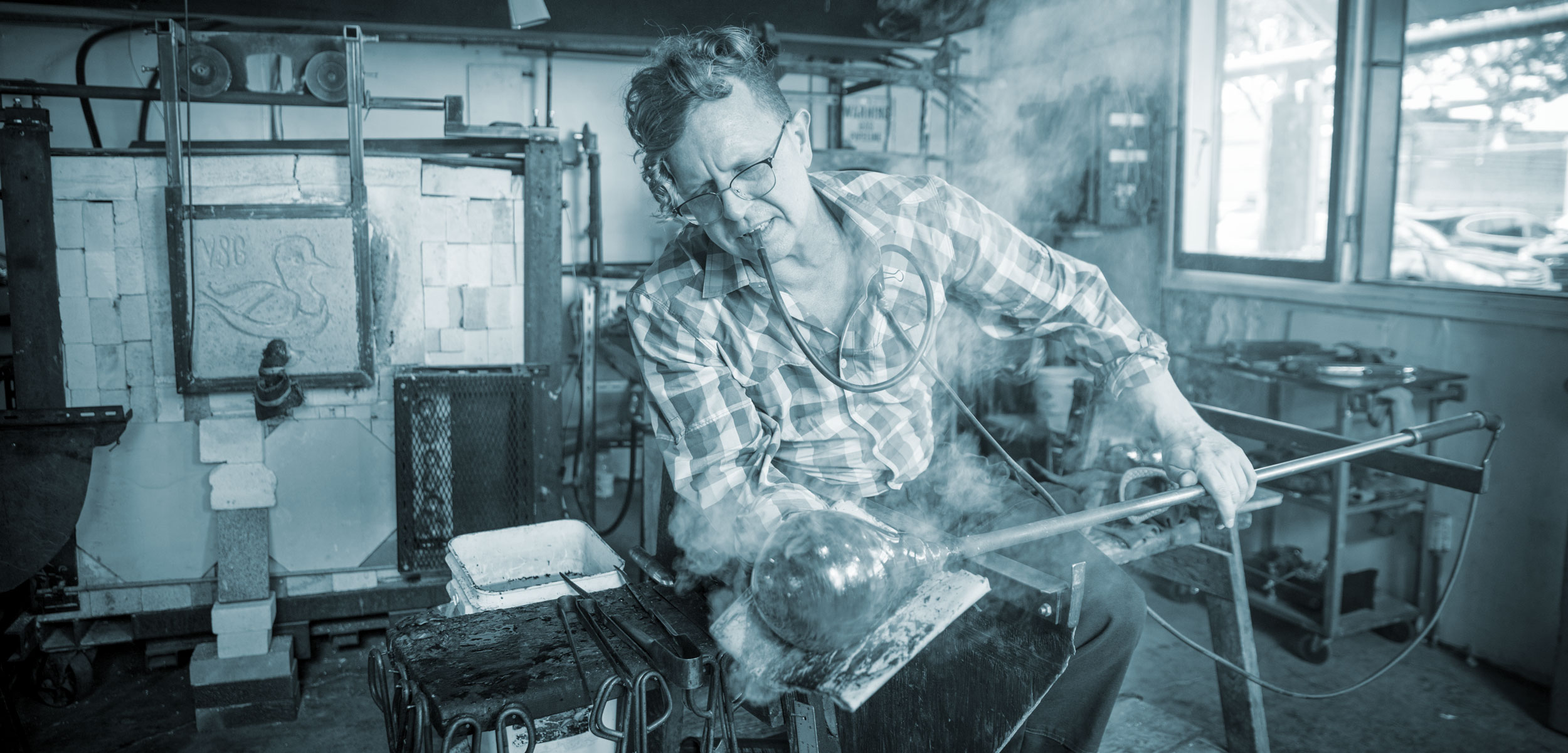Coastal Job: Coastal Art Glassblower
This artist conjures coastal landscapes and artifacts from glass.
Article body copy
Some people work in cubicles, others work in kitchens, but the most intriguing workplace of all may be the coast. Meet the people who head to the ocean instead of the office in our Coastal Jobs series.
Benjamin Kikkert is a glassblower based in Vancouver, British Columbia, who creates conceptual artwork based on coastal geography and marine artifacts. He owns and runs Vancouver Studio Glass on Granville Island.
What I find fulfilling is to study a place, examine a culture or history, and allude to it through the small details of the glass objects I make. I want someone to come across a bottle in my shop and think that it came from another time, maybe from a strange land or ocean, or to find barnacle-covered fishing floats, still warm from the furnace, that look like they’re 100 years old.
A boatyard, derelict wharf, or shipwreck are great examples of places that can ignite my creativity because through them I have access to form and cultural implications. Beyond that, I find a shoreline—how we use a shoreline and shape it through industry, the history of the people who rely on it, and the landscape and water itself—the most inspiring.
Recently, I visited Hornby Island and Tofino, two holiday destinations in British Columbia, for project research. You can see how forces of nature, like the water and wind, shape the land and the trees there. Those elements are what I express in my work. If I was going to make the Pacific Ocean, is it a dark blue? Is it a sheltered green lagoon? Is it an angry dark pewter sea of a storm? Because the ocean is not all the same blue—it has a lot of variants. How do you make wind out of glass? How do you put a sprawling creek bed in the palm of your hand? Resolving experience into form, color, and texture is what I do.
I start with powdered ingredients that I melt in a furnace, which reaches just under 1,100 ˚C. Then I dip a pipe into a pot of the liquid glass and twist, just like dipping a teaspoon in honey and spinning it to avoid dripping on the counter. When I’m working in the studio, it’s like performing music: every note I hit is recorded permanently in a three-dimensional glass object. I have to know exactly what I’m trying to make, while being open to the millions of possibilities and rapid decisions that go into making it.
One of the unique projects I worked on early in my career was for a fishing lodge. The owners had seen some art of mine that resembled tide pools and asked me to create something similar as a centerpiece for a long dining room table. At the time, I was based out of a little studio on Quadra Island, British Columbia, so I went down to the beach to photograph tide pools in their natural context to come up with a design. It was only after I assembled the centerpiece that I realized the lodge was less than an hour away from the beach that I had photographed. Think of how exciting that is! A visitor will come to this super natural west coast environment and then walk into the place where they’re staying to find a sliver of that environment glowing where they’re gathered.

